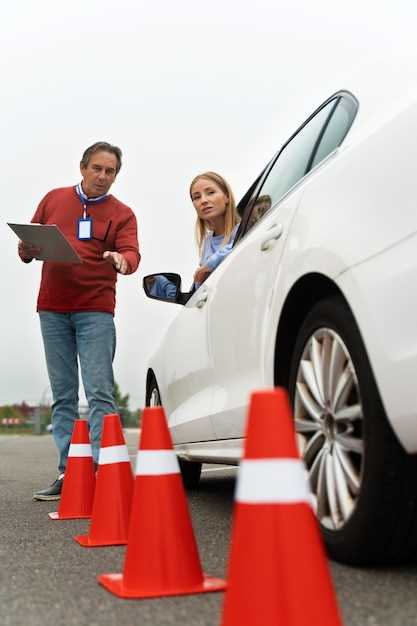
Begin with a thorough understanding of local regulations and requirements that govern the evaluation process. Familiarize yourself with the specific components of the examination, such as parking maneuvers and road signs. Knowing what to expect can significantly boost your confidence.
Engage in regular practice sessions behind the wheel. Schedule time to refine your skills in various driving conditions, including highways, residential areas, and busy intersection navigations. Consistency is key; aim for at least a few sessions each week leading up to the evaluation.
Simulating the actual test environment can further enhance your readiness. Enlist a licensed driver to accompany you and create mock scenarios that you may face during the assessment. This approach provides real-time feedback and helps identify areas needing improvement.
Consider reviewing online resources or guides tailored to the evaluation specifics in your region. They often contain insights from individuals who have successfully completed the process, offering valuable tips and common pitfalls to avoid.
Lastly, ensure that your vehicle meets all necessary safety standards prior to the examination date. Check the functionality of lights, brakes, and mirrors to prevent any last-minute issues that could hinder performance.
Understanding the Road Test Requirements in Arizona

To successfully complete the driving examination in Arizona, individuals must first hold a learner’s permit for at least six months. Accumulating a minimum of 30 hours of driving experience, including 10 hours at night, is recommended to build confidence behind the wheel.
The assessment consists of several key components. Candidates will be evaluated on their ability to perform basic maneuvers, such as turning, parking, and changing lanes. Familiarity with traffic signs, signals, and rules is imperative to demonstrate safe driving skills.
Preparation can include practicing specific skills in a variety of settings, such as residential areas and busy streets. Review the official Arizona Driver License Manual for comprehensive information about expectations during the evaluation.
Ensure that the vehicle used for the assessment is in good working condition, with operational headlights, taillights, brakes, and turn signals. Arriving with proper documentation, including a valid permit and identification, is crucial to avoiding delays.
Scheduling an appointment through the DMV website is advisable. Be prepared for a wait, as demand may fluctuate. Candidates should aim to remain calm and focused throughout the evaluation process.
Key Driving Skills to Practice Before Your Test

Master the basics: Focus on steering, accelerating, and braking smoothly. Practice maintaining a consistent speed and proper distance from other vehicles.
Sign recognition: Familiarize yourself with traffic signs, signals, and road markings. Know their meanings and how to respond appropriately during your evaluation.
Turning techniques: Practice making right and left turns. Pay attention to the correct angle and positioning of your vehicle before entering intersections.
Parallel parking: This skill is often tested. Find a quiet area to practice maneuvering your vehicle into a space with minimal guidance.
Lane changes: Work on checking mirrors and using turn signals effectively. Ensure you are aware of surrounding traffic before making a lane change.
Adapting to conditions: Drive in various weather conditions, such as rain and sun, to develop the ability to adjust speed and maintain control.
Defensive driving: Cultivate habits that allow you to anticipate the actions of other drivers. Keep your distance and be aware of potential hazards on the road.
Intersections: Practice approaching and navigating different types of intersections, including stop signs and traffic lights, ensuring to yield and stop as required.
Reversing: Regularly practice backing up straight and into parking spaces, keeping an eye on surroundings to avoid obstacles.
Observation skills: Enhance your ability to observe pedestrians, cyclists, and other vehicles. Make it a habit to check your surroundings frequently.
Parking and stopping: Work on stopping smoothly at different locations, such as curbs and designated spaces. Aim for precision and control.
Tips for Reducing Anxiety on Test Day
Arrive early to the location to familiarize yourself with the area and reduce last-minute stress.
Engage in relaxation techniques, such as deep breathing or visualization, to calm your mind before the assessment.
- Practice driving in the same environment where the evaluation will take place.
- Familiarize yourself with the vehicle you will use, ensuring you know its features and controls.
Maintain a good night’s sleep prior to the day of assessment to enhance focus and reduce fatigue.
- Eat a light meal. Avoid heavy or greasy foods that may cause discomfort.
- Stay hydrated, but don’t overdo it to avoid unnecessary bathroom breaks.
Bring necessary documents and materials to avoid any unexpected surprises.
Consider arriving with a supportive friend or family member who can help you stay calm and confident.
Prioritize positive self-talk to boost your confidence before you begin the evaluation.
